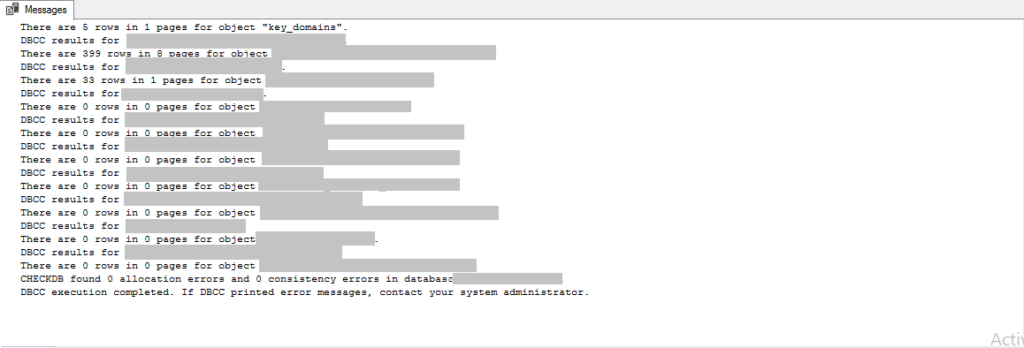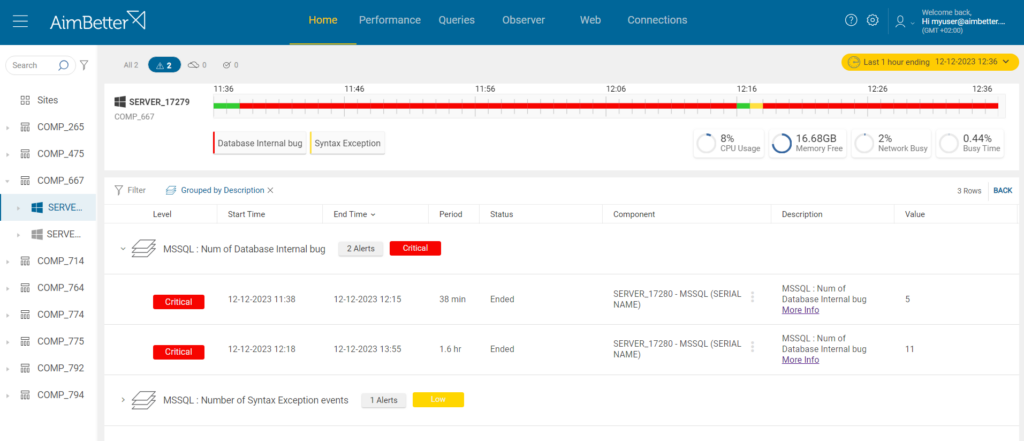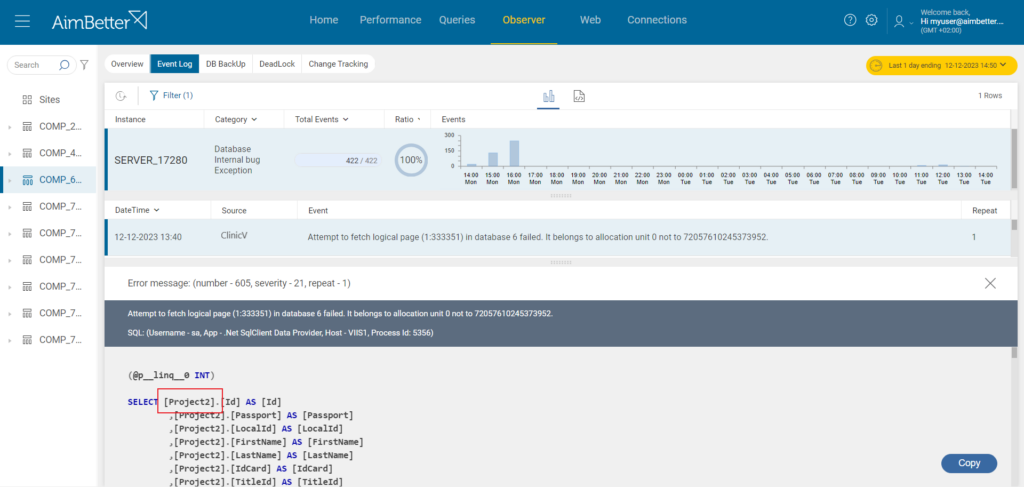For a long period, the IT team of a big healthcare facility dealt with a mysterious “Internal Database Bug” that appeared when executing a night set of procedures. The following morning, they observed execution failures in three specific processes, whose causes remained elusive.
The Database Administrator (DBA) conducted a DBCC CHECKDB to test and fix consistency errors in the SQL Server databases. This test consistently yielded satisfactory results, yet the errors persisted.
Fearing for the integrity of the company’s data, prompted by concerns after a recent security breach, the IT Manager sought a comprehensive analysis of the three problematic processes. Despite an exhaustive examination, no faults were identified.

Unable to identify the errors’ root causes, the next step taken by the IT Manager was to isolate the database, suspecting potential corruption that could impact other databases while looking for some effective solution.
Finding the Solution
In the pursuit of a definite solution, the IT Manager learned about AimBetter’s proficiency in root cause identification and decided to give it a try.

AimBetter’s comprehensive analysis provided the necessary insights for solving this company’s database bug issue by identifying a specific table with data corruption.

This information revealed to the DBA the necessity of executing a DBCC CHECKTABLE, which indicated the source of data corruption in a series of rows that should consequently be deleted to resolve the recurring issue permanently. The IT Manager understood the implied loss of outdated data that this thorough resolution demanded and authorized the deletion of the corrupted rows, solving once and for all the mysterious case of persistent bugs.






